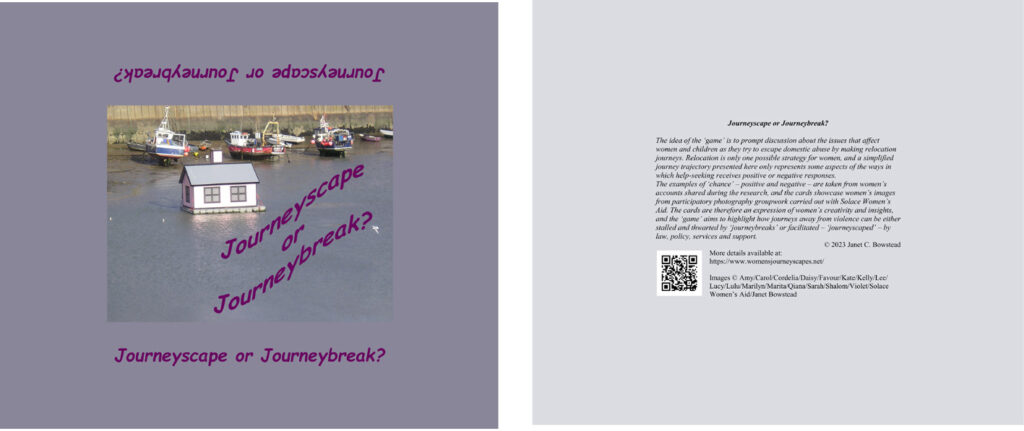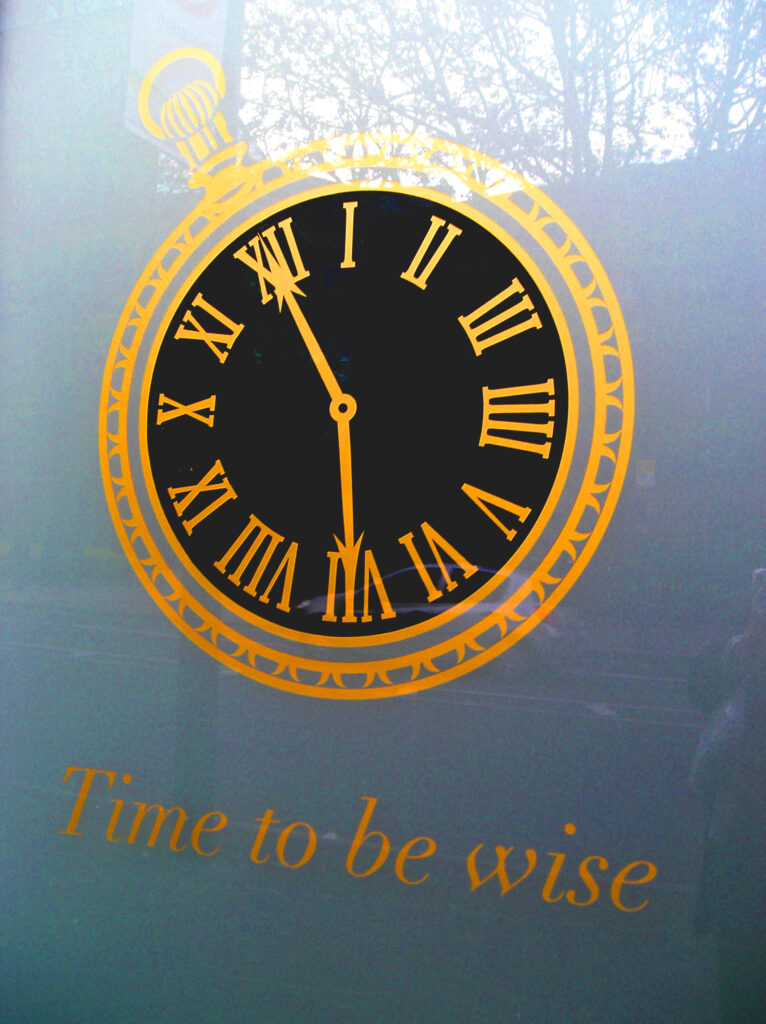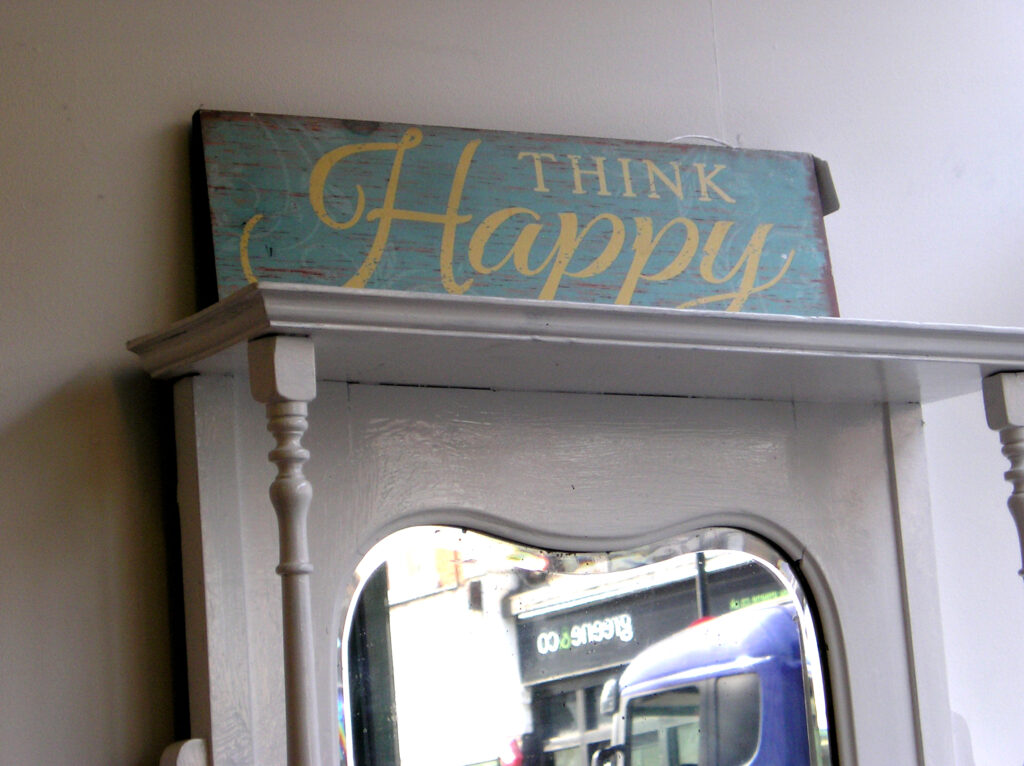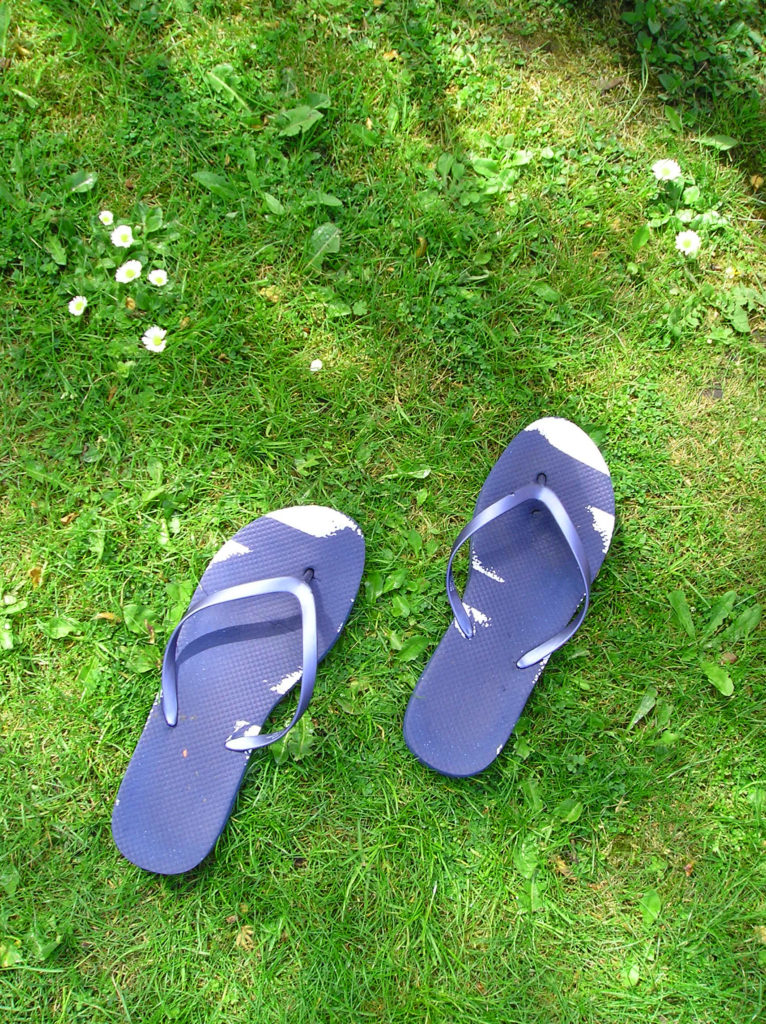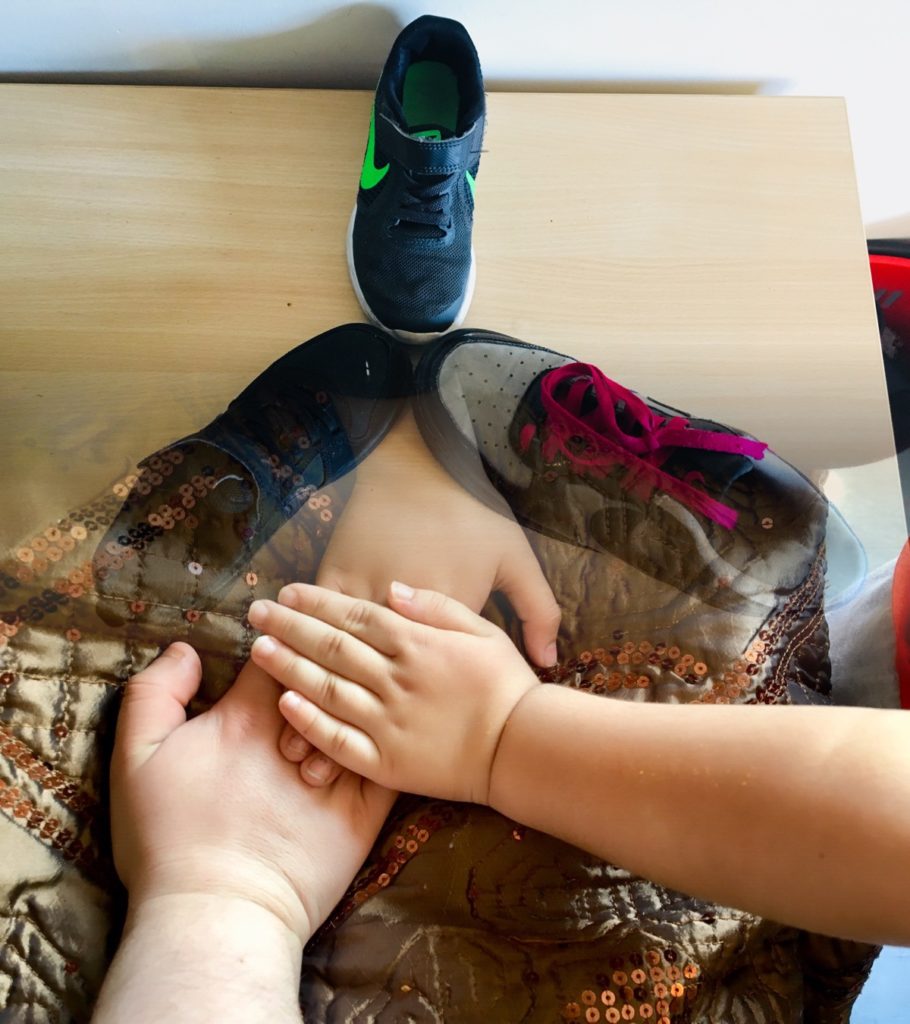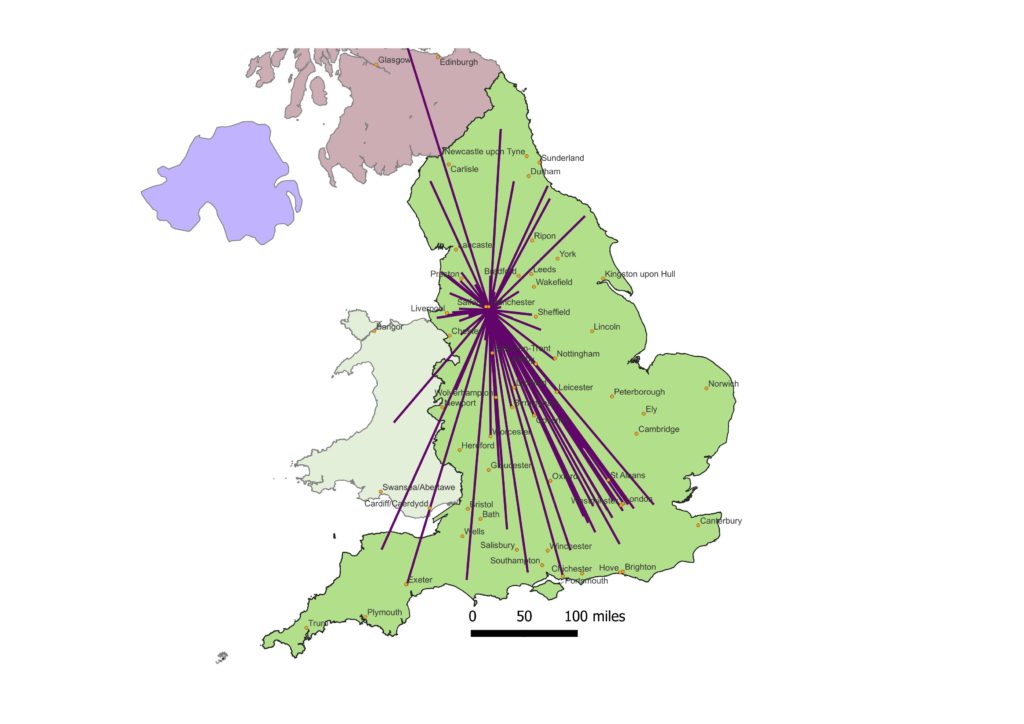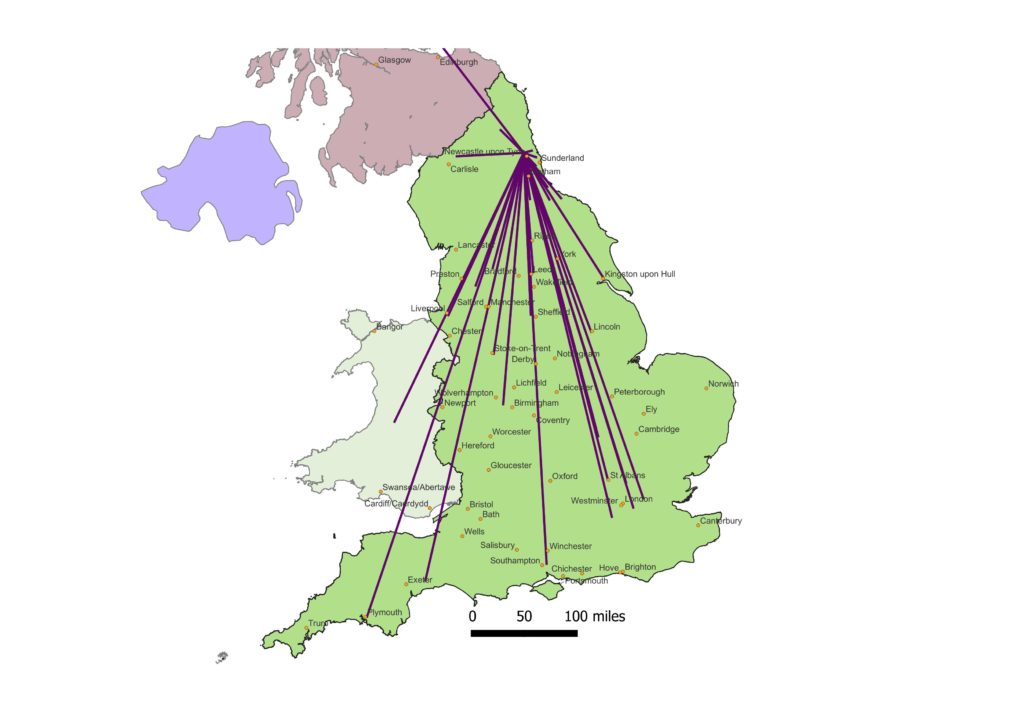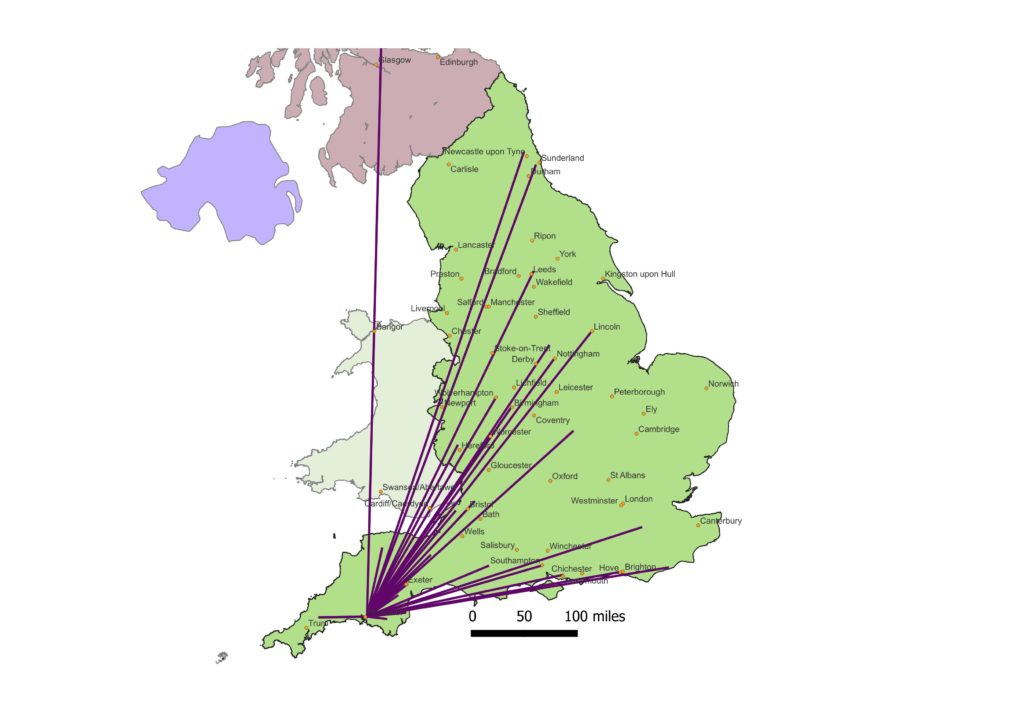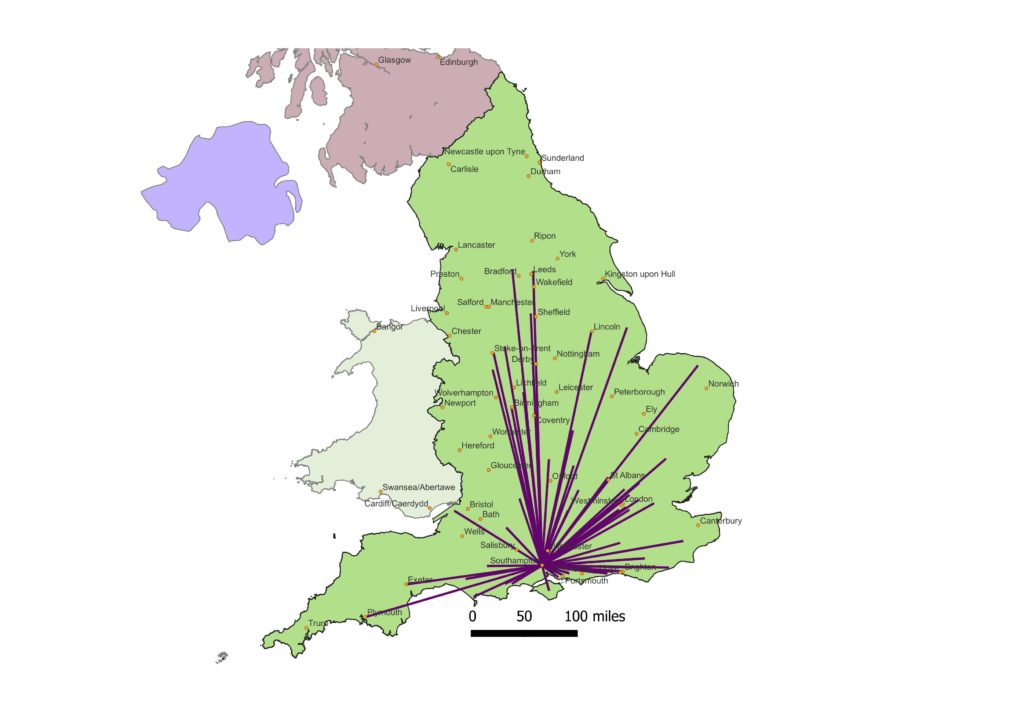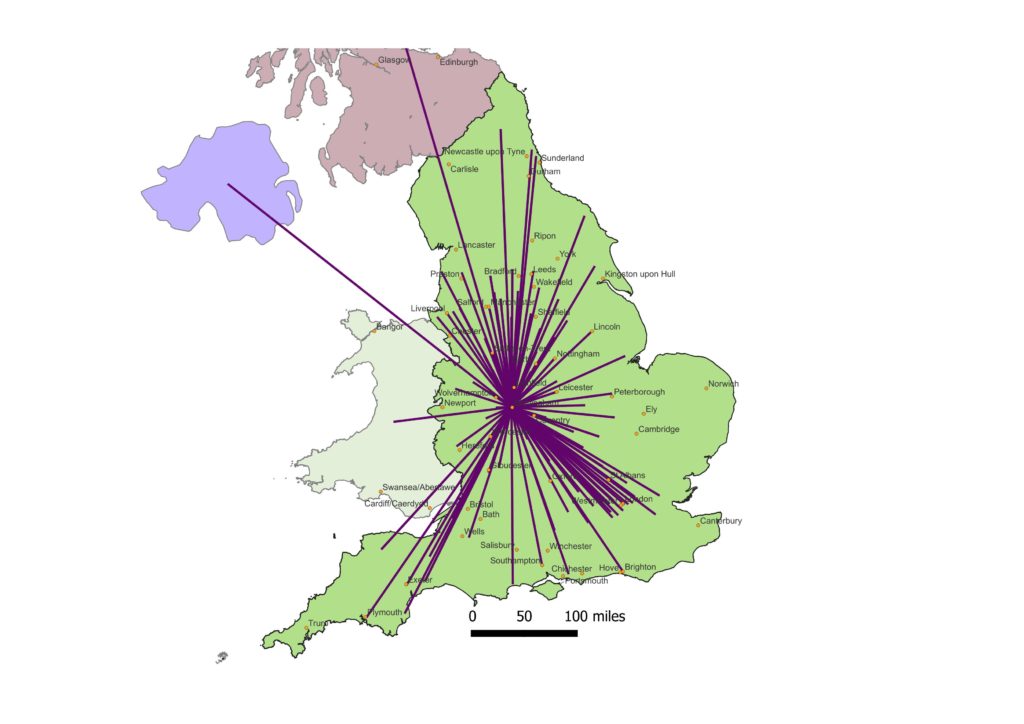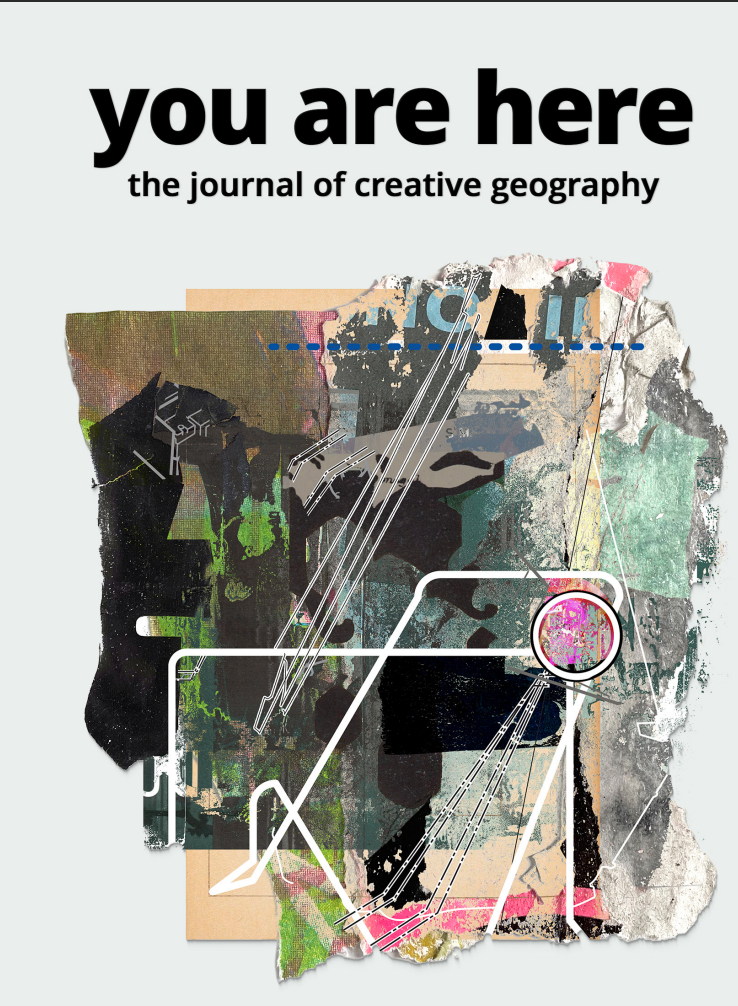However much women try to stay put and stay safe from domestic abuse, the threat of the abuser often means that they have to relocate. They are forced into journeys of escape – whether to friends or family, or to an unknown place.
Anywhere they can find some safety.
Women use all kinds of forms of transport in their journeys – they may be hiding in plain sight amongst everyone else on public transport, or in their own car, trying to concentrate on the route and fearful of the destination.
As part of this project on women’s journeys, participatory photography was carried out with groups of women in three areas of London: two groups in women’s refuges where women would soon be on the move again, and one at a women’s centre with women who were beginning to resettle. Over weekly sessions, participants used their photography and captions to communicate their experiences, producing images, maps and collages for themselves, for the group, for display in women’s services, and for wider presentation through the research.
This short video shows some of their images of different means of transport, and different signposts on the way.
© Amy, Carol, Cordelia, Daisy, Lucy, Marilyn, Sarah, Shalom/Solace Women’s Aid/Janet Bowstead
Cordelia had come to London to escape abuse, and saw the plentiful public transport as a positive way of feeling in control – of starting to settle in a new place. She said,
“When I first came to London I used to – because I didn’t know the area – I’d just get on any bus and travel around so that I could learn the city.”
A message she spotted on the side of a bus became a message for her life – used as the title of the video:
“Transport yourself to a better place. I just really liked the message because that’s what a lot of us do. I kind of like, you know, I’ve always transported myself – Here There and Everywhere.”
Amy highlighted the signs and signposts on her travels around London, like the contrast between a way seeming to be blocked – “No Exit” – and a positive route forward – “Way Out”.
She said, “I was thinking about how much I hid for so long and didn’t signal anything”, but that now she had received support from a women’s centre as a way out of the violence and abuse.
Maps and signposts – like the London A-Z, and arrows and finger posts – are welcomed as a positive help – and an opportunity. As Daisy said:
“We have a signpost! Any way you want to go!”

